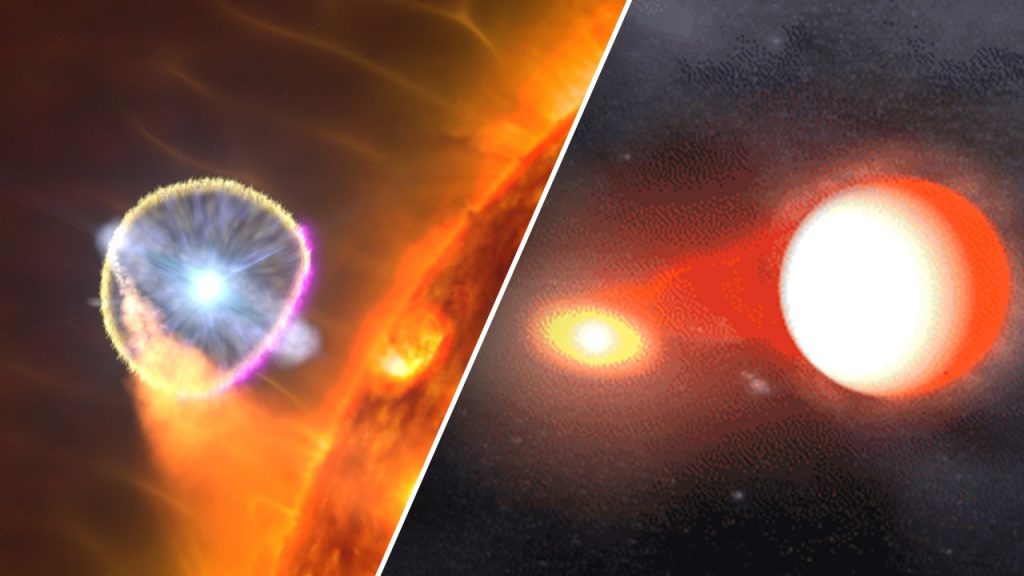NASA is predicting a once-in-a-lifetime cosmic event to occur sometime in 2024, involving a nova explosion in the star system T Coronae Borealis, also known as the blaze star, located 3,000 light years away from Earth. This event is expected to be visible to the naked eye and is one of only 10 known recurrent novas in the galaxy. The explosion occurs when a red giant star dumps material onto a white dwarf star, causing a thermonuclear reaction that results in a bright flare visible in the sky. The last time T Coronae Borealis exploded was in 1946, and when it does so again, it will reach a brightness level comparable to the North Star, Polaris.
The event will be visible just to the right of the constellation Hercules and will last for about a week before dimming back down. T Coronae Borealis last exploded 3,000 years ago, but the light from that explosion has taken this long to reach Earth. Despite the spectacle of this recurring nova explosion, it is not expected to be as bright or well-known as other cosmic events, such as Halley’s Comet. Astronomers recommend keeping an eye out for news about the explosion and viewing it as soon as possible, as it will only be visible for a few days before fading away. This event is being compared to the Great American Solar Eclipse but is considered more unique and rare.
Bill Cooke, lead for NASA’s Meteoroid Environment Office, highlights the uniqueness of the T Coronae Borealis nova explosion and recommends taking the opportunity to witness it if possible. He compares the event to solar eclipses and points out that while there are two solar eclipses every year, a nova explosion like this one is a much rarer occurrence. The exponential increase in brightness when the white dwarf blows off matter will create a visible new star in the sky, lasting for a short period before dimming down. Cooke suggests that the timing of the event is still uncertain, but when it happens, it will be a memorable sight.
The thermonuclear reaction that occurs during a nova explosion is what causes the sudden increase in brightness and creates the illusion of a new star appearing in the sky. T Coronae Borealis is expected to reach a magnitude of +2, making it as bright as Polaris, the North Star. This event is seen as a unique opportunity to witness a cosmic phenomenon that occurs only once every 79 years. The last time T Coronae Borealis exploded was in 1946, and astronomers are eagerly anticipating the next explosion and visible display of the nova. While the event may not be as well-known as others, it is considered a special and awe-inspiring sight in the night sky.
Cooke points out that while the T Coronae Borealis nova explosion may not reach the level of fame or recognition as other cosmic events like Halley’s Comet, it is still a significant phenomenon to witness. The appearance of a new star in the sky for about a week is a rare and breathtaking sight that many people may not have the opportunity to see again in their lifetime. Cooke advises skywatchers to stay alert for news about the explosion and to make an effort to view it as soon as possible once it occurs. While the timing of the event is unpredictable, the chance to witness a star explode and produce a dramatic display of light in the sky is a unique and memorable experience.















